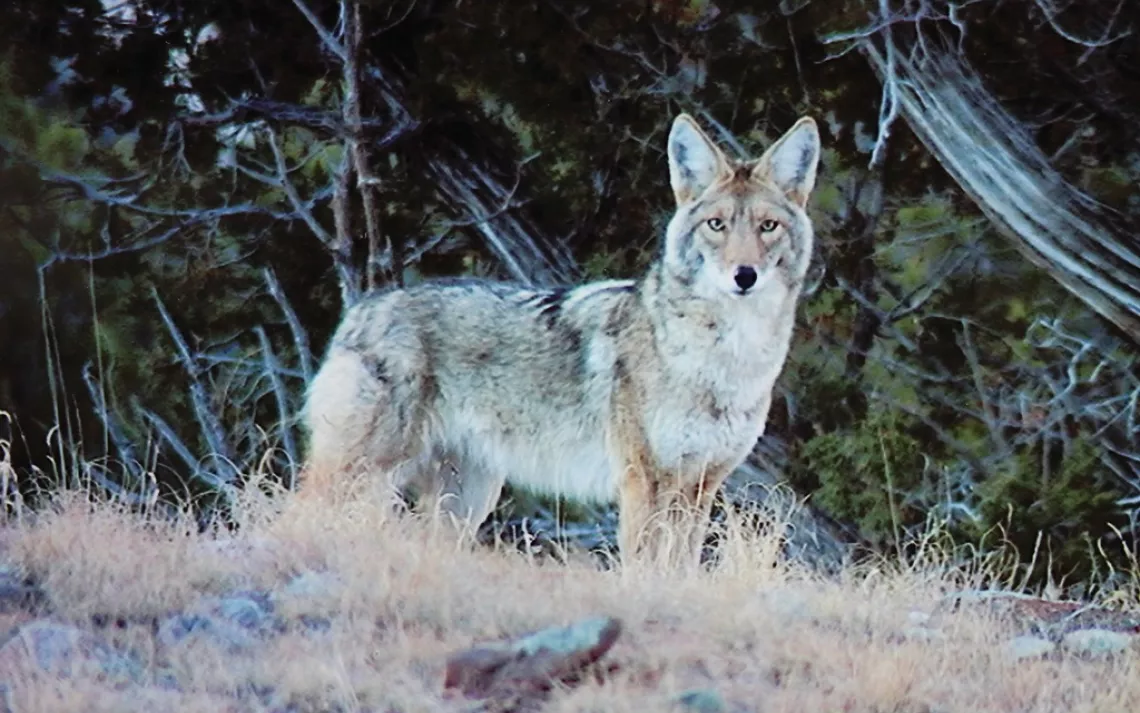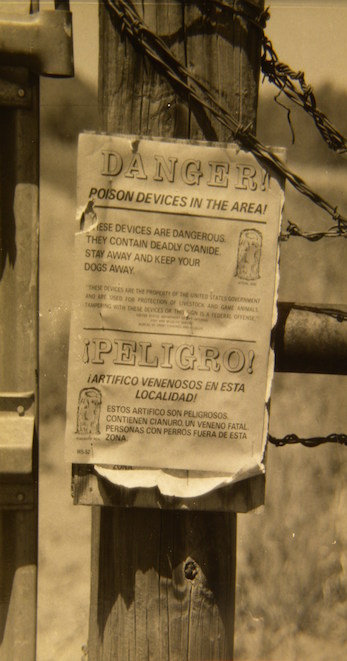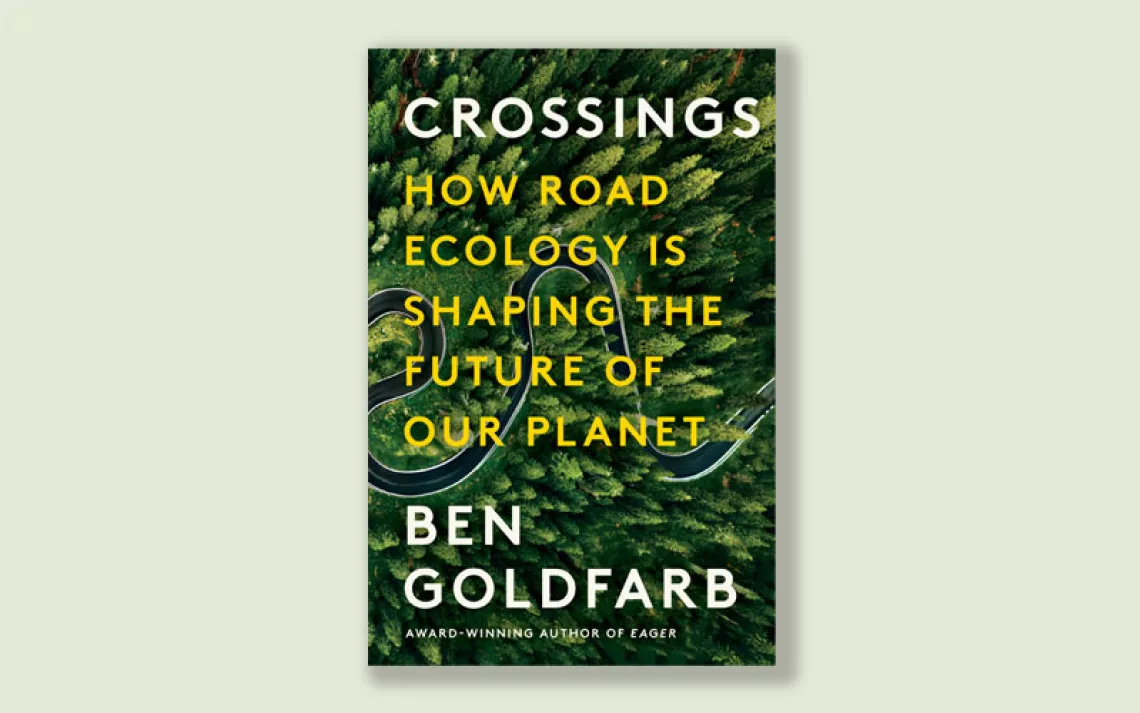Coyote America: An Excerpt
"Morning in America"

Photographs courtesy of Dan Flores
The following is an excerpt from Dan Flores's new book Coyote America: A Natural and Supernatural History (Basic Books, June 2016).
♦
Starker Leopold’s father, Aldo, had argued 15 years earlier for a revolutionary principle in human affairs: a recognition that other species in this world possess an innate right to existence. “Biocentrism” in one sense was actually evolutionary. It implied yet another extension of the circle of ethical treatment that had begun long ago in human affairs, when we first moved beyond kinship and our own genetics and granted rights to others outside our families. In Western civilization, steps in that direction had included the Magna Carta of 1215, the constitutions produced by the American and French revolutions, the Emancipation Proclamation of 1863, the Nineteenth Amendment giving women the vote, and civil rights legislation in the 1960s. The step Leopold’s followers pressed for in the late 1960s, however, struck many as the biggest step in extending ethics in human history. It advanced the radical idea that we offer ethical treatment—at least by guaranteeing their right to coexist on the planet with us—to other species.
The sea change underway in so many aspects of American culture was in full roar by the mid-1960s. Environmentalism would embrace a host of primarily human-centered issues: air and water pollution, toxic wastes, nuclear power, a search for renewable energy. But the 10 years after 1964, following Congress’s passage of the Wilderness Act, were truly the age of ecology, the most biocentric decade in American history. Leopold’s and Carson’s books and Farley Mowat’s Never Cry Wolf initiated it, pop culture coyotes contributed in a kind of TV-land Rorschach suggestion, and an emerging sense of local uncoupling from the designs of the nation and a suspicion of authority carried it forward.

Accidental eradication of creatures it had taken North America millions of years to produce because we were too self-absorbed to notice was not a new thing under the sun. Maybe condors and blackfooted ferrets and eagles were collateral damage in the same way that ivory-billed woodpeckers once were. Adapted to life in old-growth forests, ivory-bills ended up occupying too narrow a niche in the modern world. They disappeared not because of direct attack but because their habitat got logged. Of the 18 mammal, 34 bird, and nine fish extinctions in America since 1600, some were “accidental”; species with small populations or very specialized niches, like ivory-bills, had simply died out. Most were victims of crass greed: market hunting destroyed the Labrador duck, the great auk, and, against all odds, the passenger pigeon, and the capitalist market wiped nearly 30 million bison and 15 million pronghorn antelope off the face of the continent. But many other species fell into the same category as wolves and coyotes: they were coldly marked for outright extermination. We successfully eradicated the bright green and yellow Carolina parakeet, our only native parrot and one of America’s most beautiful birds (look at Audubon’s painting of them sometime) because, as with coyotes, agriculturalists thought they were pests whose lives weren’t worth the space the creatures were taking up.
During this unique and special period, a wave of ecological mindedness was building to a crest. In 1964 Secretary Udall’s office had compiled a list of 63 American bird and animal species that scientists believed were “rare” or “endangered,” a number that grew to 83 by 1966. Udall called the bill drawn up by the Lyndon B. Johnson administration to redress fears of extinction for these creatures the Endangered Species Preservation Act. Introduced into Congress by Representative John Dingell of Michigan, the act represented a couple of small first steps. It established the legal category of “endangered species,” a list of which a group of international scientists was already compiling in a so-called Red Data Book. But the 1966 law made killing such species a crime only in a very circumscribed area: the US National Wildlife Refuges. Congress passed the act with little fanfare in 1966. The same blasé approach characterized 1969’s Endangered Species Conservation Act, which also came out of the Johnson administration and made fish, crustaceans, and invertebrates—not just birds and mammals—eligible for “endangered” classification.
By 1969 Richard Nixon was president of the United States, but remarkably that did not mean environmentalism’s moment in the sun had passed. Difficult as it might be to imagine from the perspective of the 21st century, environmentalism in the late 1960s was a bipartisan issue that at least some Republicans endorsed. When Nixon took office, the first Earth Day was only a year away. Anyway, saving the planet hardly seemed controversial in an age of inner-city riots and massive student protests against the war in Vietnam. Nixon himself, of course, had not the slightest interest in nature. On a spectrum of nature-loving American presidents, with Teddy Roosevelt and Thomas Jefferson occupying one end, Nixon pretty much bookends the other. But he recognized a political bellwether, and even if he privately thought environmentalist interest in animals was pathetic sentimentalism, Nixon believed that if he and his administration publicly endorsed environmental causes, he might be able to swing the student and youth vote toward the Republicans. If, that is—as one of the president’s advisors put it—he could “identify the Republican Party with concern for environmental quality.” How controversial could environmentalism be anyway?
So, counterintuitively, the Nixon Republicans actually created the Environmental Protection Agency (EPA) in 1970, although this did not fool many Americans. When the first Earth Day in history was celebrated in April of that year, CBS Evening News anchor Walter Cronkite reported that the crowds were “predominantly anti-Nixon.” In his pursuit of youthful environmentalists, the president clearly needed another issue. And for someone with so little animal magnetism himself, he came up with a most unlikely one. With magazines from Field & Stream to Sports Illustrated to the New Yorker then running exposé articles on the government’s poisoning campaigns against coyotes and eagles, in a Coyote trick as delicious as Elvis joining Nixon’s antidrug war as a snitch, the president suddenly determined that embracing the well-being of coyotes could improve his political fortunes!
In the wake of the early 1970s media firestorm, the Sierra Club, Defenders of Wildlife, and the Humane Society joined to sue Nixon’s Interior Department. Their antipoisoning lawsuit argued, among other things, that since the federal poisoning program was taking place without meeting the new legal requirement to conduct an environmental impact study, it clearly violated the administration’s own National Environmental Policy Act. Seeking an immediate injunction to stop the predator-control program in its tracks, environmental groups eventually agreed to drop the lawsuit if the Nixon administration ended poisoning on public lands by 1972.
So Nixon appointed a committee to look once again at a federal agency that critics claimed was going way overboard in poisoning scores of thousands of coyotes, eagles, and even bears. While this committee included A. Starker Leopold, this time it was headed by Stanley Cain, a former undersecretary of Interior, and the outcome was different. Across less than a decade, there had been a seismic shift in the country’s worldview. The Cain Committee’s report, submitted to the White House in October 1971, did not equivocate: the administration should at once ban Animal Damage Control from using poisons to control coyotes and other predators. A practice that had been routine since the early century and viewed askance by only a handful of scientists suddenly began to seem, in the bright light of the new worldview, not just inappropriate but downright repulsive.
In the case of coyotes, the “silent majority” Nixon always invoked in his political speeches actually did include the president himself, or at least it appeared to if you take at face value the text of a policy speech he delivered to Congress. Nixon’s February 1972 address probably reflected more the nuanced sentiments of its author, Republican environmentalist Russell Train, than any values deeply held by Nixon. Nixon almost certainly had never read Aldo Leopold’s A Sand County Almanac, but this early 1972 environmental address nonetheless invoked Leopold’s biocentric thinking in explaining the sharp new detour in the administration’s policies.
America had reached a new stage of civilization, our president told us. “This is the environmental awakening. It marks a new sensitivity of the American spirit and a new maturity of American public life. It is working a revolution in values.” He went on to explain what this meant. “Wild places and wild things constitute a treasure to be protected and cherished for all time…[T]he wonder, beauty, and elemental force in which the least of them share suggest a higher right to exist—not granted to them by man, and not his to take away.”
Nixon had not flinched from a line about other species’ “right to exist,” and he didn’t flinch from the predator question either. “The old notion that ‘the only good predator is a dead one’ is no longer acceptable as we understand that even the animals and birds which sometimes prey on domesticated animals have their own value in maintaining the balance of nature.” The president did acknowledge that the administration was, in effect, joining this concern—“The widespread use of highly toxic poisons to kill coyotes and other predatory animals and birds is a practice which has been a source of increasing concern to the American public”—but he was now prepared to make it his own: “I am today issuing an Executive Order barring the use of poisons for predator control on all public lands.”
Banning poisons in the coyote war and acknowledging wild animals’ “higher right to exist” were not platform planks that Nixon would campaign on for reelection in 1972. Indeed, when he discovered, despite his professed embrace of the Age of Ecology, that young people and environmentalists still supported Democrat George McGovern, Nixon’s environmentalism faded as magically as it had appeared. To his credit, however, he did follow through on the policy promises he made in early 1972. Two presidential executive orders followed on the heels of the address, one banning federal agents from using poisons against mammalian and aviary predators and scavengers, the other outlawing the use of poisons on US public lands.
 The Magazine of The Sierra Club
The Magazine of The Sierra Club







